ATHENA
ESA’s Advanced Telescope for High-Energy Astrophysics (ATHENA) is a future X-ray telescope to be launched in 2031. It is the second large class mission within the European Space Agency Cosmic Vision 2015-2025 program. The aim of ATHENA is the science of the Hot and Energetic Universe, especially the study of the emission from hot plasmas, the search for missing baryons, and the study and evolution of the large scale structure and black holes (http://www.the-athena-x-ray-observatory.eu/).

(Image Credit: MPE and ATHENA Team)
ATHENA will carry two detectors, the Wide Field Imager (WFI) and the X-ray Integral Field Unit (X-IFU). Our team is part of both instrument consortia, performing simulations with the SIXTE end-to-end simulator developed at the Remeis Observatory.

Wide Field Imager (WFI)
The Wide Field Imager is a newly developed DEPFET detector, whose development is lead by the Max Planck institute for Extraterrestrial Physics (MPE) in Munich. The WFI detector consists of 4 large detector chips, allowing for a large field of view (40′ x 40′) and a fast chip to observe bright X-ray sources. More details on the detector development can be found on the official MPE page here: http://www.mpe.mpg.de/ATHENA-WFI/
X-ray Integral Field Unit (X-IFU) 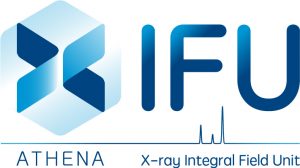
The X-ray Integral Field Unit is a microcalorimeter array using the technology of Transition Edge Sensors (TES) at sub-Kelvin temperatures in order to achieve an unprecedented energy resolution of 2.5 eV at X-ray energies up to 7 keV. The official webpage gives more details on the science and the hardware development: http://x-ifu.irap.omp.eu/
eROSITA

eROSITA
eROSITA is the main instrument of the upcoming Spektrum-Roentgen-Gamma mission (SRG). SRG is expected to be launched on 21 June 2019 from Baikonur into an orbit around the Lagrange Point L2 in a distance of about 1.5 million km from Earth.
The main scientific question eROSITA will help to answer is dark energy. Current cosmological models show that the universe consists of about 30% matter (most of which is also dark) and 70% dark energy. While the nature of this dark matter has been studied in the last decades in detail, the nature of the dark energy remains elusive. A way to study dark energy is to study the number density and distribution of galaxy clusters – the largest structures in the universe. Their distribution and evolution depends strongly on the cosmological parameters and the influence of the dark energy.
eROSITA will therefore perform the first complete all-sky survey in the energy range from 0.1 to 10 keV with high spectral and angular resolution. eROSITA is expected to find up to 100.000 galaxy clusters and 3 Million Active Galactic Nuclei (AGN). eROSITA consists of 7 identical Wolter telescopes with 54 nested mirror shells. Each telescope uses a framestore CCD sensor with 384×384 pixels.
Our team is responsible for the development of the preprocessing software (decoding of the telemetry, processing the data, and storage in the archive) and the near real time analysis (NRTA) to assess the health of the instrument and take a first look at the scientific content of the data, as well as the development of the SIXTE simulation software for the mission.
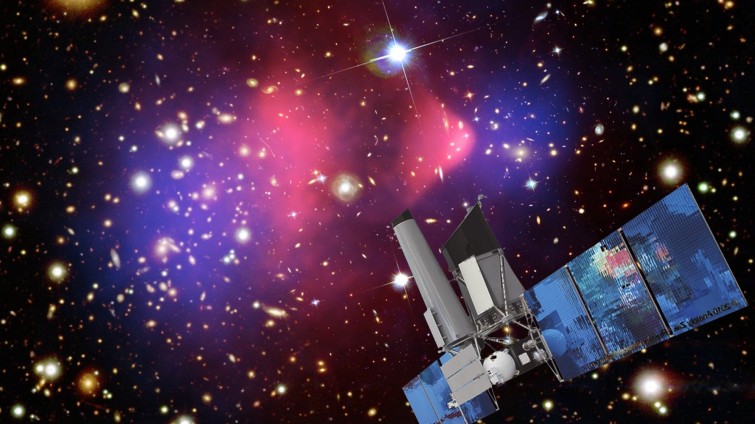
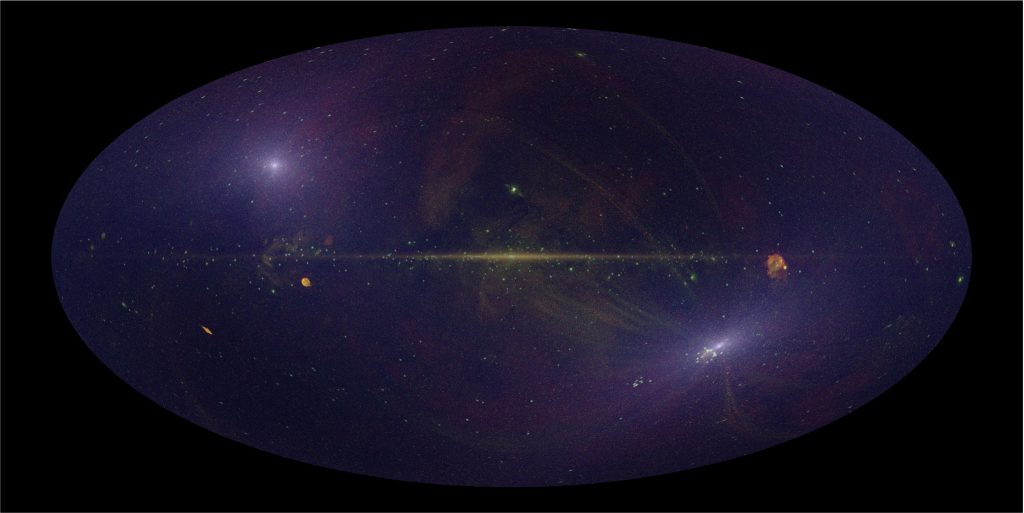
Simulation of 6 months of the eROSITA survey in Galactic coordinates. The image is not exposure corrected. It shows the two survey poles (bright spots) as well as a large number of point sources.
Software
In the following a short list of the most important software we develop is given. A full list of git archives showing the most recent development versions of the software can be found here.
Interactive-Spectral-Interpretation-System (ISIS)
The ISIS software is frequently used for X-ray data analysis software. It is being developed by the MIT and further information can be at their homepage. In order to provide a larger suite of high-level functions to this software, we started the “The Remeis ISISscripts”, which by now contains a large collection of useful ISIS functions. These functions range from general SLang functions for array manipulation or adaptive integration routines, to parallel fitting functions (together with the Remeis SLmpi module) or powerful plotting routines. More information and an explanation on how to download these scripts can be found on our isisscripts-homepage.
The SIXTE end-to-end simulator
The end-to-end simulator SIXTE is developed here for simulating the detector performance of future X-ray missions. Currently most development is done for Athena and eROSITA. The software is written in C, with contributions from different people and institutes. A full description of the simulator can be found on the dedicated homepage.
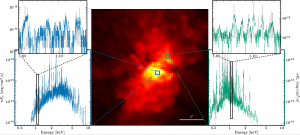
SIXTE-Simulation of M82 with the Athena X-IFU (Credits: Thomas Dauser and Athena X-IFU Team)
Near Real-Time Analysis Software (NRTA) for eROSITA
Supernova Remnant Impact on Star Formation
Although gravitation is considered to be the driving mechanism for the formation of stars out of the densest cores in molecular clouds, observations have shown that gravitation alone is often not sufficient, but additional compression by shocks like in SNRs seems to be necessary. In a systematic search using archival data and dedicated follow-up observations, we have found candidates for young stellar objects (YSOs) inside Galactic SNRs. Using these objects we study of the impact of SNR shocks on YSOs and their discs and envelopes.
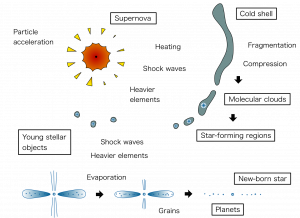
Copyright: M. Sasaki
Supernova Remnants and Superbubbles
Stars emit light because they generate energy in thermonuclear burning. Massive stars ionise the ambient medium and inject matter and energy to the ISM through their strong radiation and stellar winds. At the end of the life of a massive star, its core collapses resulting in an explosion called a supernova: a strong shock arises that ejects the outer layers outwards.
A combination of stellar winds of massive stars and one or multiple supernova explosions creates an interstellar structure called superbubbles. Supernova remnants (SNRs) and superbubbles are powered by strong shock waves and emit X-rays from thermal hot thin plasma and from non-thermal processes related to shocks. We study the emission of the shocked interstellar gas, ejecta expelled in supernova explosions, and particles accelerated in the strong interstellar shock waves using multiwavelength data.
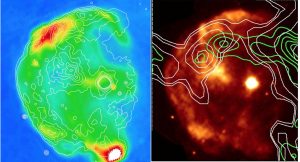
SNR CTB109 (Radio continuum of CGPS with XMM-Newton contours, right: XMM-Newton with CO and IR contours). Copyright: M. Sasaki.
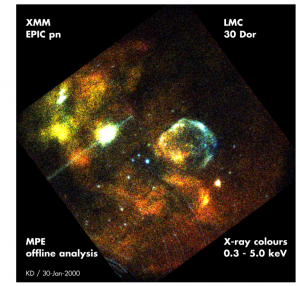
XMM-Newton First Light image, showing the LMC superbubble 30 Dor C. Credit: MPE.
X-ray Source Population in Nearby Galaxies
If a white dwarf, a neutron star, or a black hole, which are created at the end of the life of a star, forms a binary system with another star, it accretes matter from its companion, thus producing bright X-ray emission. Owing to the different types of companion stars, different populations of these accreting white dwarfs or X-ray binaries in galaxies correspond to different stellar populations, thus different star formation histories in the galaxies. We study the X-ray source populations in nearby galaxies using both archival and proprietary X-ray data in combination with data from radio, infrared, and optical observations.
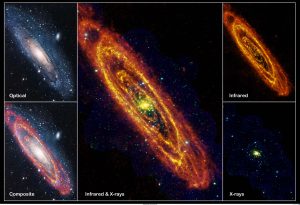
Copyright: infrared: ESA/Herschel/PACS/SPIRE/J. Fritz, U. Gent; X-ray: ESA/XMM-Newton/EPIC/W. Pietsch, MPE
Future X-ray Missions
Remeis Observatory is strongly engaged in the development of future X-ray missions by contributing with software development and performing end-to-end simulations of the detector performance. The simulations are used, for example, to study eROSITA‘s instrument performance and to provide valuable input for the development of ATHENA’s optics and instruments. Besides our active role in developing detectors for planned missions, we also take part in several studies for proposed missions such as LOFT, eXTP, Star-X, or Arcus.
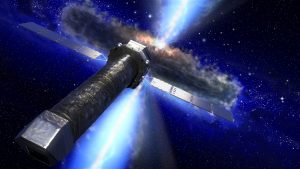
(Image Credit: ESA)
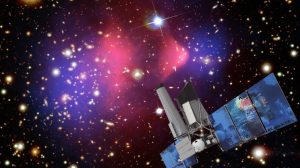
(Credit: MPE/NASA/ESA)
End-to-end Detector Simulations
The software to perform these simulations, called SIXTE (SImulations of X-ray TElescopes), is also maintained and developed here. It produces simulated event files in the same format as real X-ray data, thus allowing performance studies of both instruments and data analysis software.

(Remeis Observatory & ECAP)
SIXTE simulates the full detection chain for an astronomical instrument, from the astrophysical source through the imaging and detection process to the final data product. The source input is defined in the SIMPUT format, for which we also provide software tools. SIXTE uses these input files along with instrument specific information and data to predict the detector’s output. With this software it is possible to simulate both a full all-sky survey of eROSITA as well as individual detector effects such as charge clouds in CCD detectors or the detailed pulse shapes produced by a photon hitting a TES (Transition Edge Sensor) microcalorimeter on the Athena X-IFU detector. More information on the simulator can be found on the SIXTE homepage.
Simulation web-interfaces
For a part of the missions studied at the Remeis Observatory, we provide web-interfaces in order to allow fast simulations for users without installing any software. The following web-interfaces are currently provided:



![]()
Black Hole Binaries
X-ray spectroscopy
Hard/soft state
Active Galactic Nuclei
The most massive representatives of compact accreting objects are the so-called Active Galactic Nuclei (AGN). AGN reside amongst the most luminous objects in the universe. They source their energy from accretion processes onto super-massive black holes of millions to billions of solar masses. While they are typically accreting about two solar masses per year, they release an immense amount of radiated energy across the entire electromagnetic spectrum from the radio to the gamma-rays. Most of this energy is emitted from a region that is by a factor 108 more compact than the host galaxy. Our research particularly comprises the study of the radiative processes related to the strong and characteristic X-ray spectra. As a tool, we use modern X-ray telescopes on-board of X-ray satellites. Our aims are to better understand the physics and geometry of the X-ray source, the accretion flow as well as the direct and more distant environment including source-intrinsic gas, dust, winds and outflows. The most extreme cases of mass outflows that we are interested in are relativistic and magnetically confined jets that we can study primarily in the radio via their synchrotron emission.
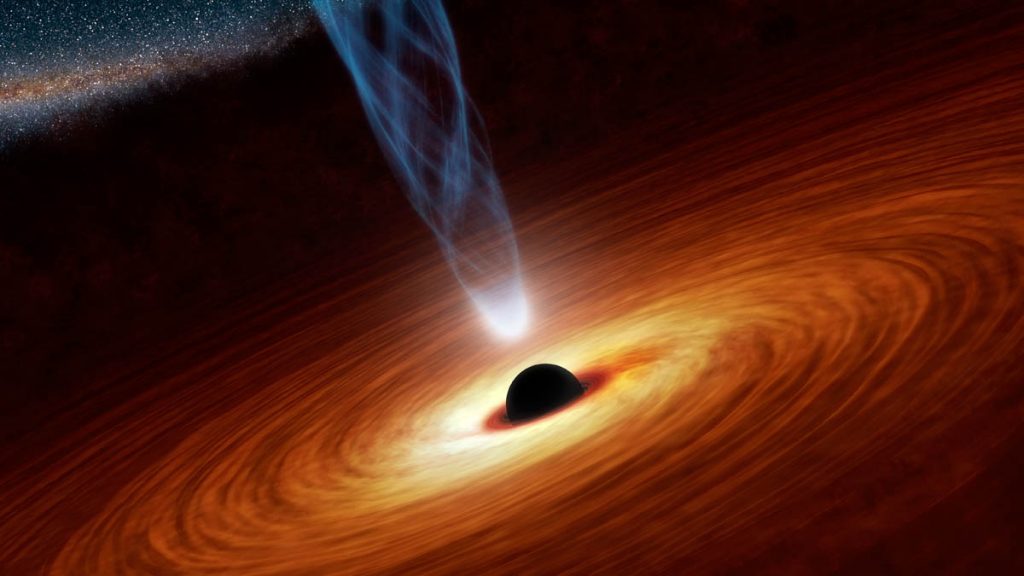
Image courtesy: MIT Kavli Institute for Astrophysics and Space Research
Understanding the X-ray source and the accreting environment by modeling accretion disk reflection
The radiation of the radio-quiet representatives of AGN, the so-called Seyfert galaxies, which lack prominent jets, is dominated by compact accretion processes. We usually observe a strong X-ray spectrum with clear signatures for X-ray photons being reflected off the accretion disk. When modeling these reflection spectra, we are able to infer valuable information on both the source of X-rays and the reflecting medium. We are involved in the development of the reflection code xillver and flavors of this model that include the (general) relativistic effects of light bending, gravitational redshifts and relativistic Doppler shifts close to the black hole in a self-consistent lamp-post geometry (relxill). In the figure shown below, the prominent and intrinsically narrow Fe K alpha line gets reflected from the inner side of the disk, where it gets distorted by these relativistic effects. The various spectra are plotted for X-ray sources (blue dot) being located at a range of heights above the black hole. A typical photon trajectory from the source towards the disk is shown as red arrow.
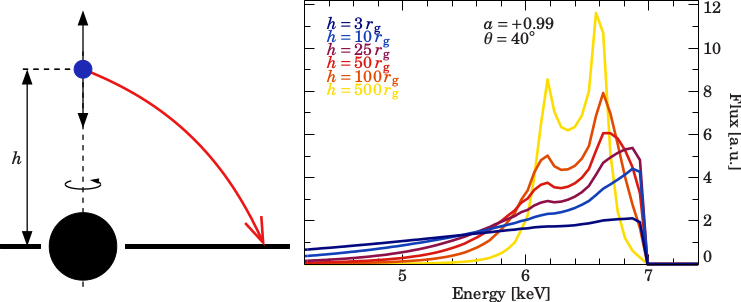
Image courtesy: Dr. Thomas Dauser
Studying the environment of accreting cores
The X-ray source only measures tens of gravitational radii as compared to matter that we assume to be distributed on scales of thousands to millions of gravitational radii. We can therefore investigate the physics, complex dynamics and geometry of this matter by the variability that is imposed on X-ray spectra due to changes of the structure (observed absorbing column) or ionization state of this matter. Here, we use the technique of time-resolved spectroscopy and rely on state-of-the-art spectral models for the absorption and emission of (photo-/collisionally) ionized or neutral matter. See also the section on “absorption in the interstellar medium” for more information on the model TBNEW that is developed and supported by Prof. Dr. Jörn Wilms at the Dr. Remeis Observatory. Our approach is shown in the following video (credit: NASA & Wolfgang Steffen, UNAM) that is part of a corresponding press release lead by our close collaborator Dr. A.G. Markowitz (CASS San Diego / NCAC Warsaw).
AGN jets in the radio light
Our research on relativistic AGN jets is done in close collaboration with Prof. Dr. Matthias Kadler and his group at the Institute for Theoretical Pysics and Astrophysics of the University of Würzburg. Our interest is related to the observations of jets on small (light years) and large scales (thousands of light years) using world-wide networks of radio telescopes, so-called radio interferometers. We interpret our data jointly with leading theorists in the field and particularly aim for a better understanding of jet launching processes, jet propagation and physics and the interaction of jets with the ambient medium. As part of the TANAMI program, we have been able to provide images that probe the jet of Centaurus A closest to the black hole just after launch with unprecedented spatial resolution (fractions of a light year). The following image shows that this jet remains powerful on thousands of light years.
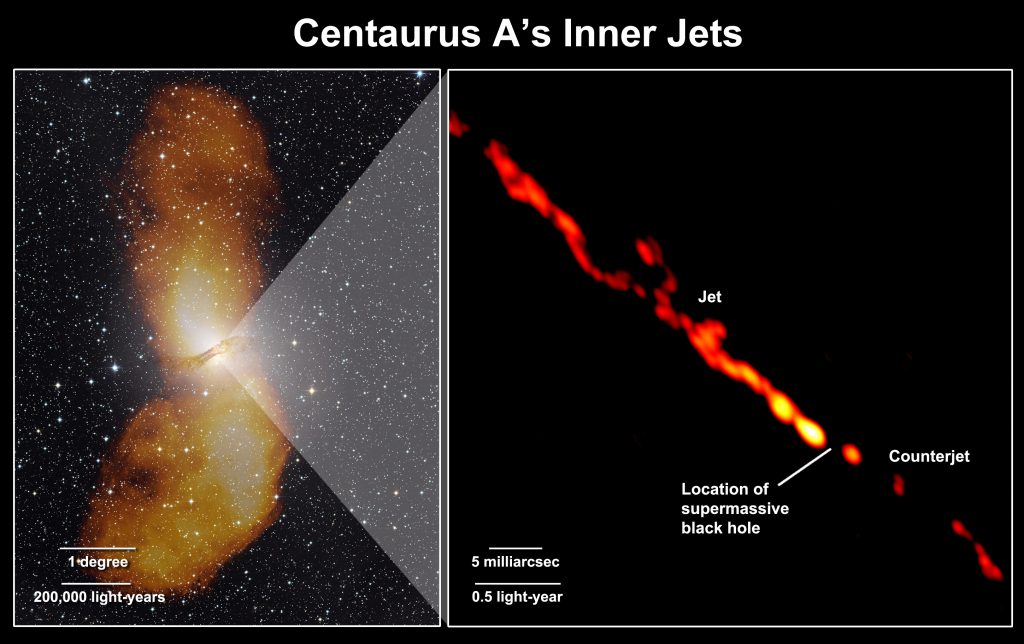
Image courtesy: Dr. Cornelia Müller
We also make use of polarization information to infer jet-intrinsic properties such as the evolution and dynamics of shocks propagating inside the jet and their influence on the underlying magnetic field. By doing so, we also touch upon the topic of the jet magnetization.
Blazar spectral energy distribution
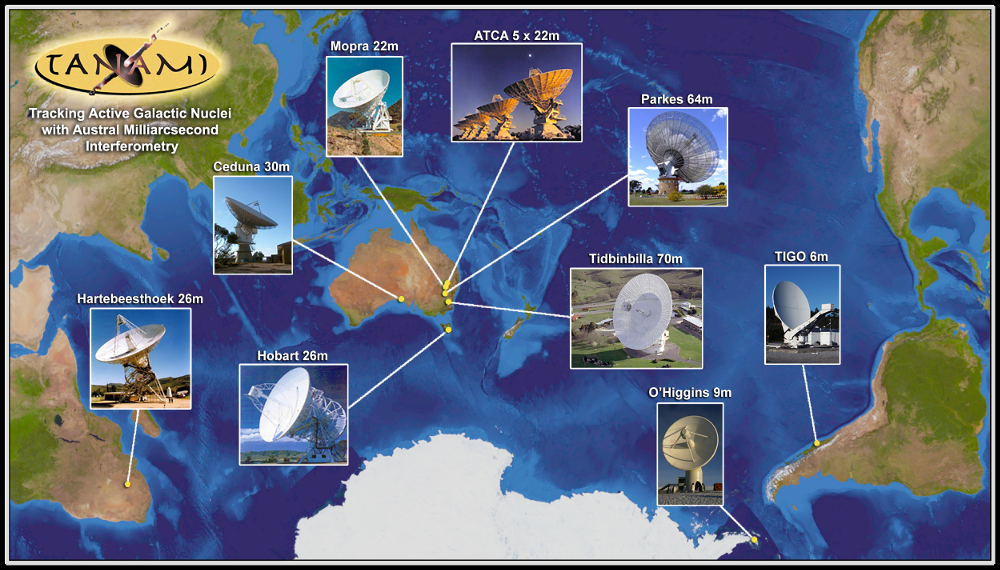
Image courtesy: TANAMI collaboration
The multiwavelength character of AGN is the basis of our joint collaboration with the University of Würzburg as part of the TANAMI collaboration. On our webpage, we also provide information for the broad audience including graphics, jet images and movies. The sources of interest are AGN with strong relativistic jets that are believed to be pointed close to our line of sight. As a result, we expect the broad-band spectrum to be entirely dominated by synchrotron and Comptonized emission from these jets, which form two characteristic “humps” in their spectral energy distributions (SEDs) as shown here for the example of PMN J1802−3940 (image courtesy: Dr. Felicia Krauß).
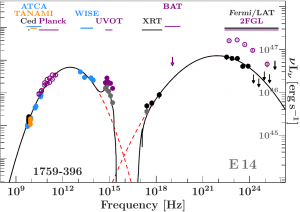
Image courtesy: Dr. Felicia Krauß
While the lower-energy “hump” is a result of synchrotron radiation, there are two explanations for the emission at higher energies depending of the jet composition which might be either leptonic or hadronic. Possibly it is a combination of both. Another unsolved mystery is the origin of recently detected extragalactic PeV neutrinos. AGN jets are discussed as the most promising candidates. We are working on searches for possible counterparts using time-series analysis of gamma-ray data in comparison with neutrino arrival times as well as measurements on the expected neutrino rates using SEDs. A positive connection would act as a clear evidence for a hadronic component. In order to map these SEDs and to get to the bottom of the raised questions, we investigate physical models to match multi-wavelength data from the radio to the gamma-rays using ground- and space-based facilities and observatories.
Quantitative Spectroscopy of Early-Type Stars
The chemical and structural evolution of galaxies is dominated by the evolution of massive early-type stars because these objects are the progenitors of core-collapse supernova explosions, which shape their ambient interstellar medium by injecting large amounts of energy and processed matter to it. Understanding those stars is thus a necessary prerequisite for understanding our universe. Determining atmospheric parameters and chemical elemental surface abundances, i.e., carrying out a quantitative spectroscopic analysis, with very high precision is the first and probably most crucial step in this search for insight.

Comparison of observed (black line) and best-fitting synthetic (red line) spectrum for a B-type star (Courtesy of A. Irrgang).
Our working group performs cutting-edge research on spectral diagnostics of early-type stars. For instance, we make use of state-of-the-art radiative transfer codes which are continuously developed further by us. Moreover, we are steadily trying to improve our analysis strategy. For example, two new features have been recently added to our analysis procedure, namely the possibility to analyze spectra of pulsating stars as well as of double-lined spectroscopic binary systems.
Research fields in our working group cover a variety of different topics related to the quantitative spectroscopy of early-type stars, such as the present-day chemical composition in the solar neighborhood as anchor point for Galactic chemical evolution models, chemically peculiar stars, the nature and origin of runaway and hypervelocity stars, stellar pulsations, and the evolution of stars in binary systems.


